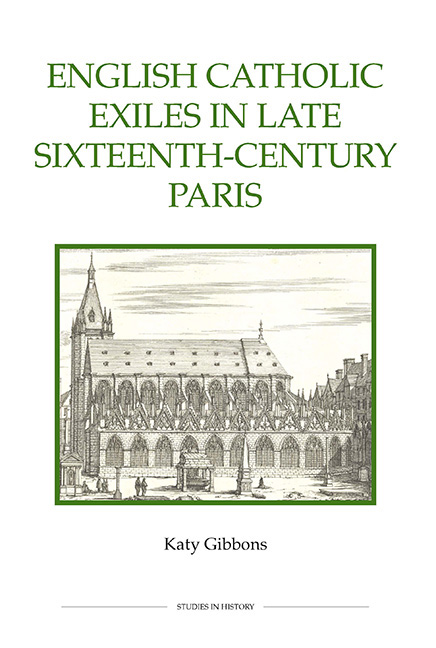Book contents
- Frontmatter
- Contents
- Acknowledgements
- Abbreviations
- Editorial conventions
- Introduction
- 1 The home and host contexts for Elizabethan exiles
- 2 Between civility and piety: exile niches in an urban environment
- 3 Exile in action: communicating and propagating the cause of radical Catholicism
- 4 Making sense of exile: alternative and competing representations
- 5 Returning or remaining? Divisions and longer-term developments in English Catholicism
- Conclusion
- Bibliography
- Index
3 - Exile in action: communicating and propagating the cause of radical Catholicism
Published online by Cambridge University Press: 11 May 2017
- Frontmatter
- Contents
- Acknowledgements
- Abbreviations
- Editorial conventions
- Introduction
- 1 The home and host contexts for Elizabethan exiles
- 2 Between civility and piety: exile niches in an urban environment
- 3 Exile in action: communicating and propagating the cause of radical Catholicism
- 4 Making sense of exile: alternative and competing representations
- 5 Returning or remaining? Divisions and longer-term developments in English Catholicism
- Conclusion
- Bibliography
- Index
Summary
In June 1587 large crowds flocked to the churchyard of the Left Bank church of Saint-Séverin. They had come to view a tableau depicting the sufferings that English Catholics were enduring at the hands of the Protestant regime. Stafford, the English ambassador, reported with a sense of alarm: ‘I never saw a thing done with that fury nor with that danger of a great emotion: not so few as five thousand people a day come to see it, some English knave priests … point with a rod and show everything; affirm it to be true and aggravate it.’ Moreover, he was alert to the connection between Catholic suffering in England and the programme of the Catholic League in France. Crowds were being told ‘how likely Catholics are to grow to that point in France if they have a king a heretic, and that they are at the next door to it, which indeed is the chief intent that the thing is set there to animate and mutiny the people’. This display, whose removal sparked a near riot on the Left Bank, was not an isolated incident but the culmination of existing tensions. It was one part of a wider discourse comparing the fate of England's Catholics with those of France. This was a discourse which engaged the efforts and arguments of both the English exiles and the radical Catholic League.
In the course of the 1580s print, public display and preaching became key weapons for the Catholic League's campaigns against a Protestant succession to the French throne, and against their current king Henri III. They were also central to the internationalisation of the cause of English Catholicism in France's capital. The immediacy and significance of oral and visual culture, including the role of rumour and oral news exchange, needs to be recognised: ‘printing was an addition, not replacement, to oral culture’. In the pulpits, radical French preachers, at the instigation of those with ‘British’ connections were both critiquing Henri's kingship and launching moral attacks against Elizabeth I. Walsingham was informed in 1585 that ‘one de Mouchy’ – presumably Michel de Monchy, a powerful figure in radical circles in Rouen – was responsible for encouraging radical preaching. This included the sermon of a Cordelier, a member of the Franciscan friary known for its political activism, calling for the massacre of Saint Bartholomew's Day to be solemnised in the French church calendar.
- Type
- Chapter
- Information
- English Catholic Exiles in Late Sixteenth-Century Paris , pp. 84 - 112Publisher: Boydell & BrewerPrint publication year: 2011



